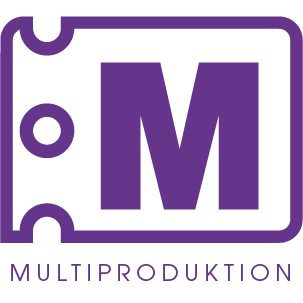What is a green screen studio
OBS! The film has no sound. It only shows how to replace a background.
In a green screen studio, a visual effects technique can be used where a subject or object is filmed in front of a solid color, usually light green. This process makes it possible to remove the green background from the image and then replace it with another background, which can be a still image, animation or film. In the example above, the background is a digitally produced studio.
Why the colour green?
There are two reasons for working with the green colour (although other colours are possible). The first is that the light green shade, not found in the human skin tone, is rarely used in clothing, so it is a "rare colour" and since everything in that shade becomes transparent in the process, it is of course good if it does not exist in the foreground object.
The second reason (at the risk of being a bit nerdy here) is how colors are compressed when recording digital film or video. A common color compression is called 4:2:2 where the numbers represent the red, green and blue color channels (R:G:B) meaning that the green color channel is intact and 1/2 of the red and 1/2 of the blue color information has been discarded. Curiously (although it sounds like a lot), we don't notice the loss of these colors because our eyes are not as sensitive to red and blue color spectra as they are to green. For various reasons, the human eye evolved with excellent detail resolution in the green channel but rather poor resolution in red and blue. So when removing the green color (also known as "keying"), it is particularly beneficial to work with the green tone so that it contains twice as much information to work with as the blue and red channels and thus provides the greatest possible contrast with the foreground.
Are green screen and chroma key the same thing?
You may also have heard the word"chroma key" in the context of green screen filming. Chroma key is a term for the method of removing a specific color in video material; "Chroma" comes from the English term "chroma range" which means color range. The word "key" is used for the method of removing a color from a color space, so "to key" or "pull a key" in the context of green screen simply means to remove the color.
Why use a green screen studio in film production?
A green screen studio in film production is a great tool for us filmmakers, as it contributes to creative freedom in post-production. The ability to choose, change or adjust the background eliminates the need for expensive filming in "real" locations and also allows the creation of, for example, non-existent environments, so-called virtual backgrounds. See examples below.
When should you not use green screen?
In some scenarios there may be a need to capture the real environment where the subject is located, where green screen is therefore not suitable. In addition, if the scene requires a high degree of visual complexity or detail - such as reflections and shadows - the green screen technique would be unlikely to produce an acceptable result. It may also be the case that the scene contains significant saturation and hue shifts in the background scene, which may cause chroma key artifacts when composited with the foreground element.
What makes a good green screen studio
A good greenscreen studio is characterized by its ability to provide the optimal background for chroma key compositing. This requires a solid, evenly lit background that can be seamlessly blended with other video elements in post-production. Studios built for green screen production must also have the necessary lighting to ensure that foreground subjects are correctly and consistently lit, without creating any unwanted reflections on the green screen background. Having a well-insulated studio with sound absorbers also helps to minimize ambient noise and unwanted acoustics.
Do you want to produce film using green screen?
We have extensive experience in producing films using green screen and are happy to help you with the production if you need to produce films with virtual backgrounds or other special effects. Contact us and we will tell you more.
